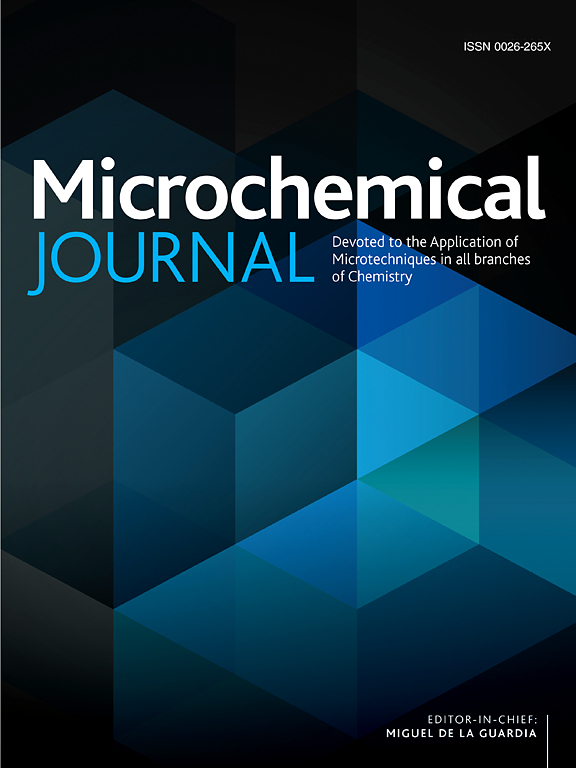基于监督机器学习的SERS检测与分类烟叶中高效氯氰菊酯和异丙砜残留
IF 4.9
2区 化学
Q1 CHEMISTRY, ANALYTICAL
引用次数: 0
摘要
表面增强拉曼光谱(SERS)是一种很有前途的快速检测农产品中痕量农药残留的技术。目前,研究主要集中在利用SERS识别无重叠谱峰特征的残基。然而,当拉曼光谱峰重叠时,该技术在准确识别物质方面遇到了挑战。本文制备了一种银纳米粒子(Ag Nps)修饰的SiO2纳米粒子(SiO2 Nps)阵列复合SERS底物(SiO2@Ag Nps-SERS底物),用于检测烟叶中氯氟氰菊酯(LCT)和异丙二酮(IPR)的残留,检出限分别为0.1 ppm和1 ppm。然后,使用监督机器学习模型对1000 cm−1处拉曼特征峰重叠的LCT和IPR残基进行识别和分类。支持向量机(SVM)、偏最小二乘判别分析(PLS-DA)和决策树(DT)模型均能对LCT和IPR残基光谱数据进行准确分类,其中SVM模型的分类准确率最高,达到99.74%。这种能力证明了我们方法的创新实力,突出了其在光谱数据分析中的普遍适用性。本文章由计算机程序翻译,如有差异,请以英文原文为准。
Detection and classification of lambda-cyhalothrin and iprodione residues in tobacco leaves by SERS combined with supervised machine learning
Surface-enhanced Raman spectroscopy (SERS) is a promising technique for the rapid detection of trace pesticide residues in agricultural produce. Currently, research is predominantly centered on utilizing SERS to discern residues characterized by non-overlapping spectral peaks. Yet, the technology encounters challenges in accurately identifying substances when their Raman spectral peaks overlap. In this paper, a silver nanoparticles (Ag Nps) modified SiO2 nanoparticles (SiO2 Nps) arrays composite SERS substrate (SiO2@Ag Nps-SERS substrate) was prepared for detecting lambda-cyhalothrin (LCT) and iprodione (IPR) residues in tobacco leaves, with detection limits of 0.1 ppm and 1 ppm respectively. And then, supervised machine learning models were used to identify and classify LCT and IPR residues with overlapped Raman characteristic peaks at 1000 cm−1. Support Vector Machine (SVM), Partial Least Squares Discriminant Analysis (PLS-DA) and Decision Tree (DT) models could all accurately classify the spectral data of LCT and IPR residues, and the classification accuracy of SVM model was the highest, reaching 99.74 %. This capability is a testament to the innovative strength of our approach, highlighting its potential for universal applicability in spectral data analysis.
求助全文
通过发布文献求助,成功后即可免费获取论文全文。
去求助
来源期刊

Microchemical Journal
化学-分析化学
CiteScore
8.70
自引率
8.30%
发文量
1131
审稿时长
1.9 months
期刊介绍:
The Microchemical Journal is a peer reviewed journal devoted to all aspects and phases of analytical chemistry and chemical analysis. The Microchemical Journal publishes articles which are at the forefront of modern analytical chemistry and cover innovations in the techniques to the finest possible limits. This includes fundamental aspects, instrumentation, new developments, innovative and novel methods and applications including environmental and clinical field.
Traditional classical analytical methods such as spectrophotometry and titrimetry as well as established instrumentation methods such as flame and graphite furnace atomic absorption spectrometry, gas chromatography, and modified glassy or carbon electrode electrochemical methods will be considered, provided they show significant improvements and novelty compared to the established methods.
 求助内容:
求助内容: 应助结果提醒方式:
应助结果提醒方式:


